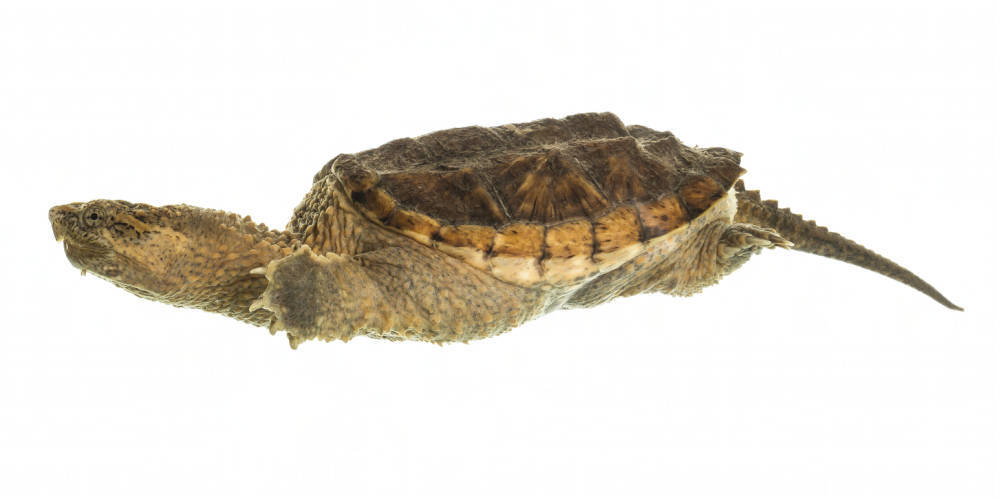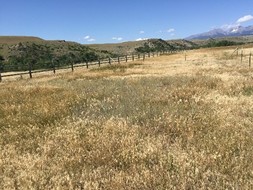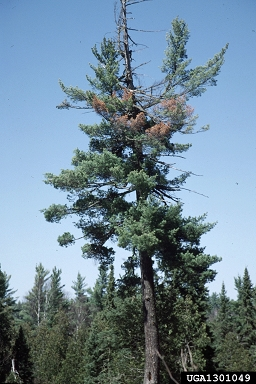|
The Invasive Species Bulletin provides you with all the latest news on invasive species in Montana and the region. Please let us know if you have any suggestions, contributions, questions, corrections, or comments. Email: EMoran@mt.gov

On Thursday, Aug. 26, watercraft inspectors at the Nashua station inspected an outboard motorboat with mussels on the transducer, gimbal and other areas of the transom. The motorboat was traveling from Lake Erie to Kalispell. This is the 50th mussel-fouled boat intercepted this year, surpassing the total number of 35 mussel-fouled boats intercepted in 2020.
The Nashua watercraft inspection station, located on Highway 2, is operated by the McCone Conservation District under a contract with Montana Fish, Wildlife & Parks.
Statewide, 94,800 watercraft inspections have been conducted this year, slightly down from the 112,300 number of inspections conducted at this time last year.
FWP reminds anyone transporting motorized or nonmotorized boats into Montana that an inspection is required before launching, and stopping at ALL open watercraft inspection stations is required. Failing to stop at an inspection station can result in a fine of up to $500.
Boaters should ensure their watercraft, trailer and all equipment that is in contact with water (anchor, lines, swim ladder, etc.) is clean, drained of water and dry.
Learn more at CleanDrainDryMT.com or call the FWP Aquatic Invasive Species Bureau at 406-444-2440.
|
Invasive Species Bulletin On Break
After this month's edition, the MISC bulletin will be on hiatus. Council coordinator and Invasive Species Program Manager, Stephanie Criswell, has taken a new position in DNRC. Recruitment for the new program manager will begin soon.
In light of the rapidly escalating COVID-19 pandemic, the NAISMA Board of Directors and staff, in consultation with former co-host Montana Invasive Species Council (MISC), have decided to cancel the in-person portion of the conference and to continue with the virtual conference instead. This decision was based on several factors.
NAISMA staff, board of directors, conference co-host MISC, and the conference planning committee will be adding more resources and fun activities to the virtual conference to make it even better than it was last year, including more small group networking, coffee chats, games, trivia, door prizes, and all virtual attendees will receive a swag bag with a printed program and other goodies!
I’m sorry that we can’t gather in person again this year, but I thank you for your understanding and I look forward to seeing you at the virtual conference in just one month.
Sincerely,
Chuck Bargeron
Board President, NAISMA
 USDA Continuing African Swine Fever Prevention Efforts – Preparing to Establish Foreign Animal Disease Protection Zone to Safeguard Puerto Rico, U.S. Virgin Islands, and the Entire U.S. Swine Industry
USDA Animal and Plant Health Inspection Service sent this bulletin at 08/26/2021 11:05 AM EDT
Contact:
Mike Stepien
mike.stepien@usda.gov
As part of its continuing efforts to respond to the detection of African Swine Fever (ASF) in the Dominican Republic (DR) and prevent its introduction into the Conterminous United States, Puerto Rico, and the U.S. Virgin Islands, the U.S. Department of Agriculture’s (USDA) Animal and Plant Health Inspection Service (APHIS) is preparing to establish a Foreign Animal Disease protection zone in Puerto Rico and the U.S. Virgin Islands. ASF has not been detected in Puerto Rico or the U.S. Virgin Islands, and USDA is committed to keeping it out of both islands and the rest of the United States. Out of an abundance of caution, APHIS is taking this additional action to further safeguard the U.S. swine herd and protect the interests and livelihoods of U.S. pork producers.
The World Organisation for Animal Health (OIE) provides for the establishment of a protection zone within an area free of disease, as a temporary measure in response to an increased risk from a neighboring country or zone of different animal health status. APHIS has concluded that this is a prudent course of action in response to the detection of ASF in the DR. Once the OIE recognizes the protection zone(s), APHIS will work to confirm that individual countries recognize and accept the zone(s). Their recognition will ensure the continued flow of U.S. pork and live swine exports.
When the protection zone is established, APHIS will have processes in place in Puerto Rico and the U.S. Virgin Islands to: restrict movement of live swine and products out of the protection zone; conduct appropriate surveillance within the protection zone to quickly detect introductions of disease; conduct a public education campaign relating to biosecurity on farms and other establishments, prohibitions on movement of live swine and products outside the region, contacting authorities to report clinical cases, and similar actions.
APHIS has been actively working with DR officials to assist in their response to the ASF detection, including: offering technical advice and assistance on surveillance, quarantine, depopulation, and disposal methods; providing continued testing support, including bolstering in-country testing capacity; and providing additional personal protective equipment for responders. Although ASF has not been confirmed in Haiti, APHIS is offering the country similar support.
APHIS is confident that its many existing preventive measures and mitigations, along with the additional measures underway and announced today, will protect our livestock industry from ASF and ensure the continued export of pork.

MSU team publishes research on Asian giant hornets
By Reagan Colyer, MSU News Service
AUGUST 19, 2021
BOZEMAN — A team of researchers from Montana State University’s College of Agriculture published a paper earlier this month in the Journal of Insect Science outlining the risk of Asian giant hornets establishing populations in the Pacific Northwest, including Montana.
Recent graduate Erik Norderud, associate professor Scott Powell and professor Bob Peterson of the Department of Land Resources and Environmental Sciences examined factors that may lead to higher risk for the insect’s establishment. The hornets have become known as “murder hornets” due to their status as a primary predator to honeybees. The team conducted risk assessments for every county in Idaho, Montana, Oregon and Washington — a total of 175 counties. Read more.
|

Snapping Turtle found in Montana
August 17, 2020.
A new report of Chelydra serpentina (snapping turtle) was documented in Missoula, Montana.
FWP asking people to be on the lookout for snapping turtles in Missoula Valley
Current report can be viewed here.
At the request of Wisconsin Sea Grant, the National Sea Grant Law Center conducted research to inform discussions regarding interstate boat sales. Online boat sales are a potential pathway for the spread of aquatic invasive species. Of particular concern is the sale and transport of boats from the Upper Midwest and Lower Colorado River to the Pacific Northwest due to the presence of quagga and zebra mussels (QZM) in those regions. Because this memorandum was requested by Wisconsin Sea Grant, the analysis of state law focuses on the Upper Midwest route. While the details of state law will vary, the memorandum’s overall discussion of the issue is equally applicable to the Lower Colorado River route. Read the memorandum
 |
|
New research from Wisconsin Sea Grant Aquatic Invasive Species Outreach Specialist Tim Campbell, University of Wisconsin-Madison Associate Professor Bret Shaw and consultant Barry T. Radler sheds new light on such communication. The researchers analyzed which communication strategies are most effective and which may pose unintended problems. Shaw is a faculty member in the Department of Life Sciences Communication and is also an environmental communication specialist in the university’s Division of Extension. Read more.
|
Dry, hot climate drives blister rust disease upslope, threatening white pines
Dead top in eastern white pine caused by white pine blister rust.
More News
Immediate Update: The Technical Advisory Group for Biological Agents of Weeds Manual has been updated
Invasive plants are still for sale as garden ornamentals, research shows- Invasive species are widely available due to inconsistent regulation
Posted: 17 Aug 2021 10:14 AM PDT
Ecologists show that 1,330 nurseries, garden centers and online retailers are still offering hundreds of invasive plant species as ornamental garden plants. This includes 20 species that are illegal to grow
Distinguishing Invasive Buckthorn from Native Alderleaf Buckthorn
Common buckthorn (Rhamnus cathartica) and glossy buckthorn (Frangula alnu [Rhamnus frangula]) are non-native, deciduous, woody shrubs or small trees that were introduced to North America as ornamentals, hedge-row plantings, shelterbelts, and wildlife habitat. Alderleaf buckthorn (Rhamnus alnifolia) is a deciduous native shrub or small tree. It is a desirable native plant that is not invasive, and plays an important role in the ecosystem. The three species of buckthorn overlap in their distribution and habitat in North America.
Distinguishing between non-native and native buckthorn is important so that management efforts can be targeted appropriately
MSU Ag Extension Alerts: The 2021 Montana Pesticide and Waste Disposal Program Sites
08/27/2021 - 10/14/2021
Pesticide applicators should be aware of the 2021 Montana Pesticide and Waste Disposal Program sites. Delaying removal of unused pesticide products often leads to corroded containers that pose unnecessary risk towards the environmental and human health. By following a few simple steps applicators can ensure unused pesticides are discarded and disposed of legally and safely.
NOAA Fisheries and U.S. Department of Agriculture’s Agricultural Research Service (USDA-ARS) are providing notification, on behalf of the National Science and Technology Council's Subcommittee on Aquaculture, of a 45-day comment period for the two Regulatory Efficiency and Science Planning Task Force draft strategic plans: the Strategic Plan to Enhance Regulatory Efficiency and the Strategic Plan for Federal Aquaculture Research. The 45-day comment period for both plans is open through September 18, 2021. These two plans establish a road map for federal agencies to increase the overall effectiveness and productivity of federal aquaculture regulation, research, and technology transfer. The Federal Register notice can be viewed here.
Firewood drop-off boxes added at P.E.I. entrances to stop spread of invasive species
The new firewood drop-off bins at the entrances to Prince Edward Island are a fantastic idea- and they come with an extra important detail to increase public acceptance- free firewood coupons! You should really read the whole article, which details how the bins are being distributed, and how the wood is being safely disposed, but the key part to know is, “People who are staying at provincial or national park campgrounds are able to get wood in exchange. When they drop off at the disposable bins, they are able to get a coupon for free replacement firewood at those campgrounds.” This is an outstanding use of a positive reinforcement tool to protect trees.

Testing Indaziflam for Restoring Cheatgrass (Bromus tectorum) Infested Montana Rangelands
In summer 2020 the active ingredient indaziflam (RejuvraTM) was approved by the Environmental Protection Agency for use on rangelands, CRP, and natural areas. Indaziflam’s mode of action inhibits cellulose biosynthesis in seedlings, making it an effective pre-emergent herbicide for annuals such as cheatgrass (Bromus tectorum), a non-native winter annual grass. Cheatgrass is the most widespread invasive plant in the western U.S., and it is problematic for many range managers throughout Montana. Ranchers and other land managers in Montana are interested in indaziflam as another tool for controlling cheatgrass. This project focused on effectiveness of control of cheatgrass, measuring the perennial grass response, and return on investment of this herbicide for ranchers. Read more.
|
Propose a candidate name for Lymantria dispar
The Entomological Society of America is taking proposals for a new common name for Lymantria dispar until Sept 8 2021. The ESA is eager to see a new common name for Lymantria dispar be adopted, and already has announced the former common name of “gypsy moth” will no longer be used in ESA publications, meetings, or other communications and outlets due to its offensive origin. ESA has formed a working group of ~50 pest managers, outreach professionals, and researchers who are engaged with L. dispar to collect candidate names and work to select a new approved common name for this moth. If you want to increase the chance that your suggested name(s) will be viable candidates, the ESA advises you first read up on the existing ESA common names guidelines.
Events
Sept. 15-16, NW Regional Invasive Species & Climate Change Symposium, virtual
Sept. 20-24, WRP Annual Meeting, virtual
Sept. 22-23. Hands-on Integrated Pest Management Workshop on Soil Health. Montana State University, Bozeman
Sept. 27, Feral Swine Transboundary Workgroup Meeting. Contact scriswell@mt.gov for more information, Missoula
Sept. 27-30, North American Invasive Species Management Association Conference co-hosted with MISC, virtual
Sept. 30, Abstracts due for 22nd International Conference on Aquatic Invasive Species
Oct. 4, Abstracts due for Midwest Fish and Wildlife Conference
Oct. 6-7, Invasive Species Council of BC 2021 Invasive Species Research Conference, virtual
Oct. 13, Upper Columbia Conservation Commission, Trout Creek
Oct. 31-Nov. 3, Entomological Society of America, hybrid, Denver, Colorado
Nov. 29-Dec. 2, Innovations in Invasive Species Management Conference and Training, Nashville
Feb. 28-March 4, 2022, National Invasive Species Awareness Week
April 18-22, 2022, 22nd International Conference on Aquatic Invasive Species, Thermae Palace Hotel, Oostende Belgium
Webinars
NAISMA
September 15, 1 p.m. CT - Flowering Rush Biology, Management, and Control
October 20, 1 p.m. CT - Forestry BMPs for Invasive Species [lnks.gd]
U.S. EPA IPM webinars - Usually 90-minute programs focused on different IPM topics.
Webinar Recordings
The IMP Hour monthly online seminars
Funding Opportunities
DNRC and MISC accepting AIS Grant Application
Click here for more information.
Up to $50,000 is available per project to Montana communities or local, state, tribal, or other entities within the state and to Montana-based non-governmental entities.
Applications are due Wednesday, November 3, 2021, by 5 pm.
NEW this cycle:
DNRC is transitioning from WebGrants to Submittables and this change will make it easier to complete and manage your application online. Grantees will be able to complete reports, send notifications, and track and edit submissions. Click here to create an account and here to watch a video on how to get started with Submittables. To apply click here.
MISC has established permanent dates for the annual AIS grant cycle.
Application cycle opens: Annually in late summer (8/1/21)
Application cycle closes: 1st Wednesday in November by 5 p.m. (11/3/21)
AIS Grant Hearings: 2nd Wednesday in January (1/12/21)
|
|
|
|
Funding Available to Support Areas, Industries and Crops by Documenting Pest Management Needs
Funding: Up to $15,000 per award
Details: These grants can be used to produce Pest Management Strategic Plans, Crop Profiles or other IPM-related plans. $75,000 is available in the 2021 cycle.
Applications considered on a rolling basis until funds are exhausted.
Resources to get you started:
Western PM Center Planning Document Request for Applications - The way to apply for our grant funding.
Guidelines for Producing a Pest Management Strategic Plan - This is the traditional approach to these documents.
Guidelines for Producing an Integrated Pest Management Strategic Plan - This is new approach to writing a PMSP that focuses more on IPM principles
If you have questions or want to know more, email Western IPM Center Director Matt Baur.
Job Opportunities
Visit State of Montana Careers for all current state openings.
|










